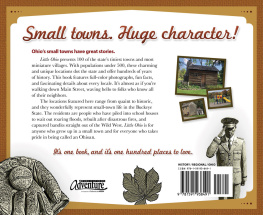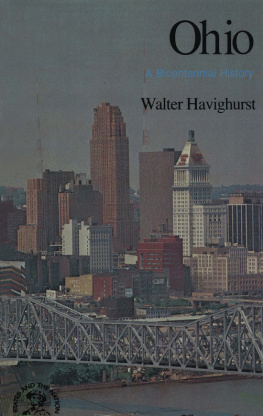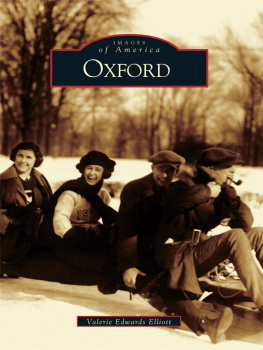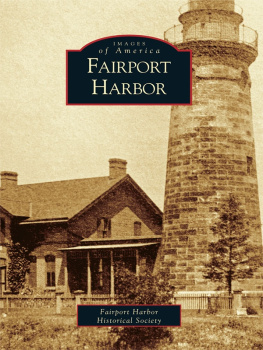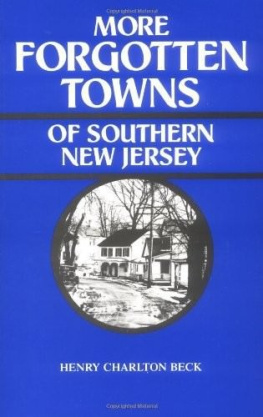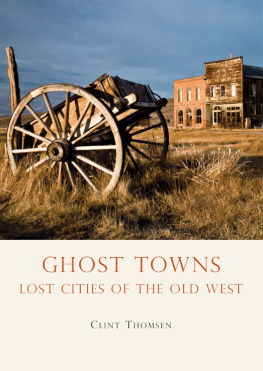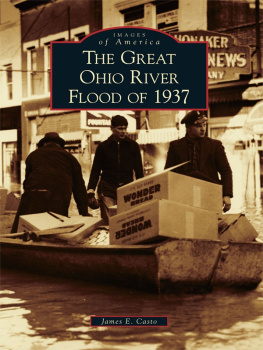THE OHIO RIVER VALLEY SERIES
Rita Kohn and William Lynwood Montell
Series Editors
Towns &
Villages
OF THE
Lower Ohio
DARREL E. BIGHAM 

Publication of this volume was made possible in part by a grant from the National Endowment for the Humanities.
Copyright 1998 by The University Press of Kentucky
Scholarly publisher for the Commonwealth, serving Bellarmine College, Berea College, Centre College of Kentucky, Eastern Kentucky University, The Filson Club Historical Society, Georgetown College, Kentucky Historical Society, Kentucky State University, Morehead State University, Murray State University, Northern Kentucky University, Transylvania University, University of Kentucky, University of Louisville, and Western Kentucky University.
All rights reserved
Editorial and Sales Offices: The University Press of Kentucky
663 South Limestone Street, Lexington, Kentucky 40508-4008
02 01 00 99 985 4 3 2 1
Library of Congress Cataloging-in-Publication Data
Bigham, Darrel E.
Towns and villages of the lower Ohio / Darrel E. Bigham.
p. cm. (Ohio River Valley series)
Includes bibliographical references and index.
ISBN 0-8131-2042-X (acid-free paper)
1. Ohio River ValleyHistory, Local. 2 City and town lifeOhio River ValleyHistory. I. Title. II. Series.
F516.B54 1997
976.9dc2197-30247
This book is printed on acid-free recycled paper meeting the requirements of the American National Standard for Permanence of Paper for Printed Library Materials.
Manufactured in the United States of America
FOR POLLY
Contents
Illustrations follow
Figures and Maps
Figures
Maps
Series Foreword
The Ohio River Valley Series, conceived and published by the University Press of Kentucky, is an ongoing series of books that examine and illuminate the Ohio River and its tributaries, the lands drained by these streams, and the peoples who made this fertile and desirable area their place of residence, of refuge, of commerce and industry, of cultural development, and, ultimately, of engagement with American democracy. In doing this, the series builds upon an earlier project, Always a River: The Ohio River and the American Experience, which was sponsored by the National Endowment for the Humanities and the humanities councils of Illinois, Indiana, Kentucky, Ohio, Pennsylvania, and West Virginia, with a mix of private and public organizations.
The Always a River project directed widespread public attention to the place of the Ohio River in the context of the larger American story. This series expands on this significant role of the river in the growth of the American nation by presenting the varied history and folklife of the region. Each books story is told through men and women acting within their particular place and time. Each reveals the rich resources for the history of the Ohio River and of the nation afforded by records, papers, and oral stories preserved by families and institutions. Each traces the impact the river and the land have had on individuals and cultures and, conversely, the changes these individuals and cultures have wrought on the valley with the passage of years.
As a force of nation and as a waterway into the American heartland, the Ohio and its tributaries have touched us individually and collectively. This series celebrates the story of that river and its valley through multiple voices and visions.
Towns and Villages of the Lower Ohio brings forward a long-neglected part of our American regional story. Based on thorough, impeccable research, this book takes us into the eras of big dreams and exuberant dreamers for whom every bend in the river conjured up economic promise. Here we meet the people who established a myriad of places along the new nations waterway to riches and fame. Here we relive their triumphs and disappointments. Here we walk with our history in process, making deals, measuring corporate limits, and sometimes manipulating facts to boost enterprise. Here we grasp the realities between place and promise and celebrate names absent and extant on current maps of the flat-plained corridor from the Salt Rivers entry to the Mississippis flow. Here we encounter the Ohio of Audubon and Lincoln and the Trail of Tears.
RITA KOHN
WILLIAM LYNWOOD MONTELL
Preface
The roots of this book are quite deep. Having grown up along a major river, the Susquehanna, I have always had special interest in the ways that rivers shape communities, and vice versa. A seminar in antebellum America that I had thirty years ago at the University of Kansas kindled appreciation for the vagaries of river town development. John G. Clark, seminar director, sparked my desire to someday explore the topic in depth. My coming to the University of Southern Indiana, a brand-new university in Evansville, the lower Ohios largest city, was fortuituous in that regard. Most of my work before 1990, though, focused on the African and German American settlement of southwestern Indiana.
Little did I know that a superb opportunity would arise in the late 1980s with the Always a River project of the six state humanities councils bordering the Ohio. Led by the indefatigable Rita Kohn, then of the Indiana Humanities Council, this initiative produced Always a River: The Ohio River and the American Experience, edited by Robert L. Reid (Bloomington: Indiana University Press, 1991). I had the opportunity to contribute an essay on the economic consequences of the Ohio to this anthology. From the AAR undertaking also emerged a series on the Ohio Valley edited by Rita Kohn and Lynwood Montell of Western Kentucky University. They invited me to write a book on settlements on the lower Ohio, a project which seemed at the time a fairly easy extension of the research I had completed for the 1991 anthology.
I was soon disabused of that notion, as additional reading made me aware of the rich resources on the varied stories of the lower Ohio. Some places, because of size, institutional resources, and historians attention, possess a wealth of resources for research. Many communities do not, for the same reasons, but size alone does not guarantee an abundance of historical records. Surprisingly, Evansville has yet to be the subject of a comprehensive and reliable history.
I have many people to thank for their assistance, especially those always considerate and helpful librarians at the Indiana State Library, the Indiana Historical Society, the EvansvilleVanderburgh County Public Library, and the University of Southern Indiana. The staff at the Kentucky Room of the OwensboroDaviess County Public Library were generous with time and suggestions, as were their counterparts in other town libraries, especially in Metropolis and Paducah. Special thanks are due Lyn Martin and Carol Bartlett of Evansvilles Willard Library and to Gina Walker, who manages special collections in the USI Library.


